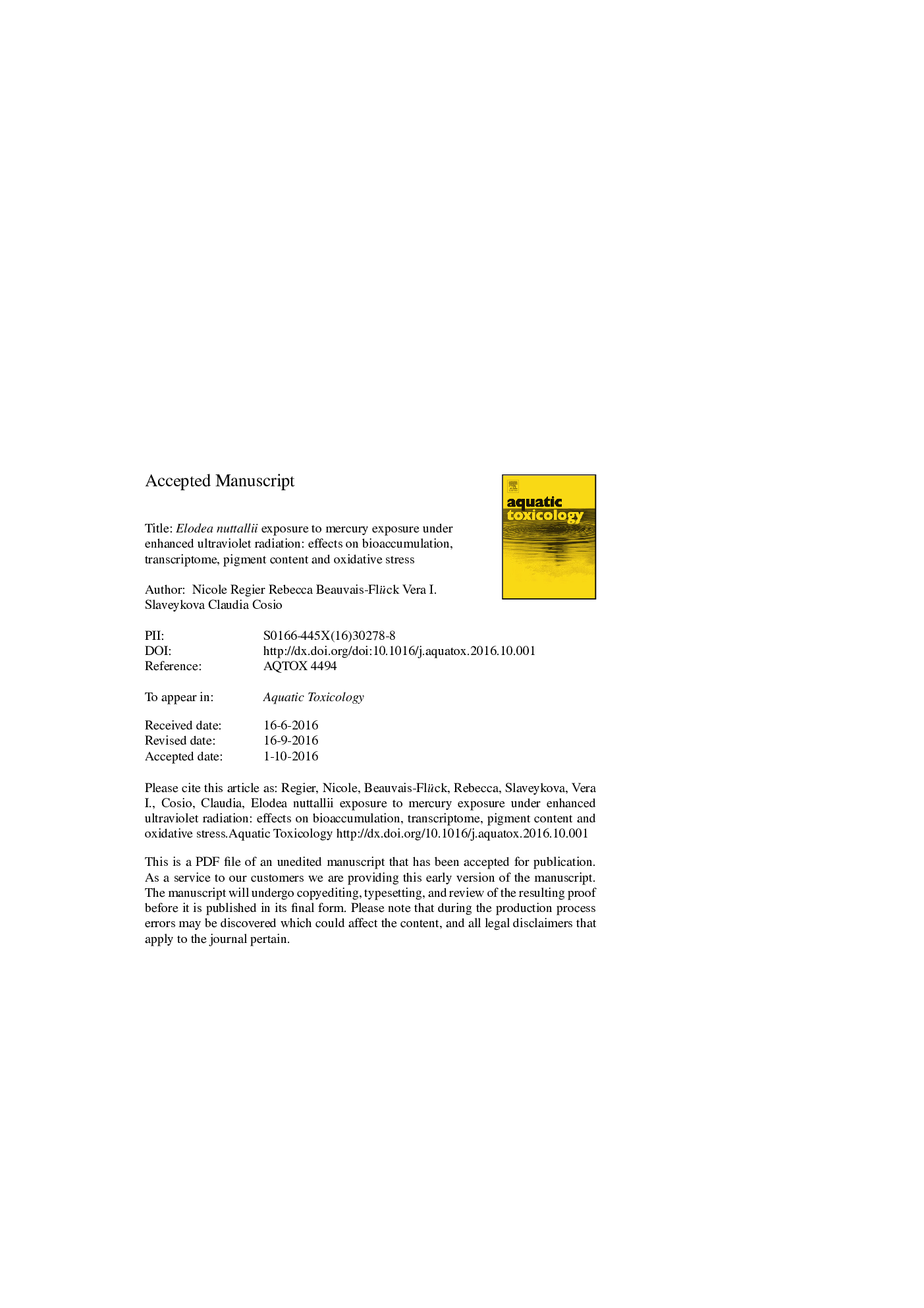| Article ID | Journal | Published Year | Pages | File Type |
|---|---|---|---|---|
| 6381847 | Aquatic Toxicology | 2016 | 34 Pages |
Abstract
The hypothesis that increased UV radiation result in co-tolerance to Hg toxicity in aquatic plants was studied at the physiological and transcriptomic level in Elodea nuttallii. At the transcriptomic level, combined exposure to UVÂ +Â Hg enhanced the stress response in comparison with single treatments, affecting the expression level of transcripts involved in energy metabolism, lipid metabolism, nutrition, and redox homeostasis. Single and combined UV and Hg treatments dysregulated different genes but with similar functions, suggesting a fine regulation of the plant to stresses triggered by Hg, UV and their combination but lack of co-tolerance. At the physiological level, UVÂ +Â Hg treatment reduced chlorophyll content and depleted antioxidative compounds such as anthocyanin and GSH/GSSG in E. nuttallii. Nonetheless, combined exposure to UVÂ +Â Hg resulted in about 30% reduction of Hg accumulation into shoots vs exposure to Hg alone, which was congruent with the level of expression of several transporter genes, as well as the UV effect on Hg bioavailability in water. The findings of the present work underlined the importance of performing experimentation under environmentally realistic conditions and to consider the interplay between contaminants and environmental variables such as light that might have confounding effects to better understand and anticipate the effects of multiple stressors in aquatic environment.
Related Topics
Life Sciences
Agricultural and Biological Sciences
Aquatic Science
Authors
Nicole Regier, Rebecca Beauvais-Flück, Vera I. Slaveykova, Claudia Cosio,
